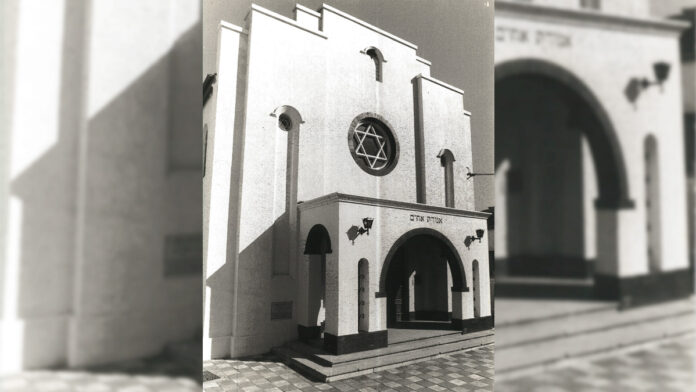By Juan-Paul (Paysach) Burke
Once upon a time there was a shul in Woodstock called Agudat Achim, ‘A Band of Brothers’, which was home to the Woodstock and Salt River Hebrew Congregation.
Its early members, mostly originating from Lithuania and Latvia, were Yiddish speaking grienes (fresh immigrants), hardworking, who lived side-by-side with a variety of races, and who saw their community gradually acclimatise from one generation to the next, becoming South Africans. It was a close-knit community that placed a great emphasis on Jewish education and values, a proud bastion of Yiddishkeit in a suburb beyond the Cape Town City Bowl. Sadly, today it is no longer, the community dissolved and the shul sold in the 1980s. Still, its memory lives on in the hearts and minds of Woodstockers around the world, and in their descendants, to whom its values are imparted.
Yet, thanks to the initiative of three cousins: Cecil Gelbart, Harold Idesis, and Herschel Gelbart; a Woodstock and Salt River Hebrew Congregation Collection was added to the South African Jewish Museum’s digital archive. So even non-Woodstockers can now also appreciate and enjoy the memories of the Woodstock Shul. Its history, legacy, and heritage — thanks to the efforts of all involved — are accessible to future generations to research, admire and appreciate.
The collection is divided into several themes, namely: Property; Leadership Eras; Religious Personnel; Talmud Torah; Closing of Shul and Legacy; and Reunion 2004. The collection includes a variety of photographs, documents, audio recordings, published and original articles, and interviews, covering 1914 until the present.
In addition there is an accompanying YouTube channel, where you’ll find the almost hauntingly uplifting traditional chants from that immigrant generation, sung by Mike Gelbart, a baal tefila/baal kore. There are
15 audio recordings covering a variety of tunes, or nusach, sung throughout the Jewish year, from the common weekday mincha to the once-a-year second day Shavuot Haftora’s Yetziv Pitgam, as practiced only in the diaspora.
Admittedly, the collection is by no means comprehensive, but it’s an excellent start, and the SAJM is willing to accept more material, such as photographs, writings or recordings of memories from the public.
So, I invite you to come and explore this wonderful collection, and if you have any additional material and information to add, please contact the SA Jewish Museum: archives@sajewishmuseum.co.za.
• Published in the PDF edition of the June 2022 issue – Click here to read it.
• To advertise in the Cape Jewish Chronicle and on this website – contact us on 021 464 6700 ext. 104 or email advertising@ctjc.co.za. For more information and advertising rate card click here.
• Sign up for our newsletter and never miss another issue.
• Please support the Cape Jewish Chronicle with a voluntary Subscription for 2022. For payment info click here.
• Visit our Portal to the Jewish Community to see a list of all the Jewish organisations in Cape Town with links to their websites.
Follow the Chronicle: Facebook | Instagram | Twitter | LinkedIn











